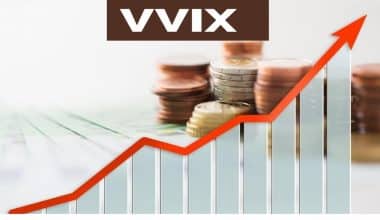The S&P 500 index, or S&P 500, is a collection of approximately 500 of the largest publicly traded companies in the United States. It’s an ironic name for one of the best stock portfolios in the world, one that has returned about 10% per year to investors over long periods. The S&P 500 index is detailed below, including its top companies and long-term performance.
What is S&P 500 Index?
The S&P 500 Index, also known as the Standard & Poor’s 500 Index, is a market capitalization-weighted index of 500 of the largest publicly traded companies in the United States.
It is not an exact list of the top 500 U.S. companies by market capitalization because the index includes other criteria. Nonetheless, the S&P 500 index is regarded as one of the best indicators of the performance of major American equities, and thus of the stock market as a whole.
How Does a Stock Get Added to the S&P 500?
Standard & Poor’s has stringent criteria for inclusion in its flagship index, and companies are admitted every quarter if they meet the requirements. Following the failure of Silicon Valley Bank in March 2023, S&P Dow Jones Indices announced that medical device company Insulet (PODD) would replace SVB Financial Group in the S&P 500.
The change was supposed to go into effect on March 15, 2023.
The following are the key requirements for inclusion in the index as of January 2023:
- It must be a company based in the United States.
- Must have a market capitalization of at least $8.2 billion, and at least 50% of its shares must be available (“floated”) on the exchange.
- The stock must be traded on a major US exchange, such as the New York Stock Exchange or Nasdaq.
- Companies must have positive earnings in the most recent quarter as well as the previous four quarters combined.
- Must have traded at least 250,000 daily shares in the six months before inclusion.
These are the most important criteria for inclusion, but Standard & Poor’s also considers how the inclusion of a stock maintains a balance among sectors for the index as a whole. Index managers desire a group of companies that reflects the major American corporations.
The S&P 500 is a Weighted Index
The S&P 500 is a weighted index based on the size of the companies in the index. The larger the company, the more clout it possesses. The weightings are based on the market capitalization of each company or the total value of its outstanding shares. A larger company is weighted more heavily in the index, but Standard & Poor’s makes some adjustments based on how much of the stock is floated in the market.
The price of the S&P 500 index that you see quoted, for example, at 4,301.56, is measured in points, not dollars. This is the weighted average of the index’s components. According to the calculation, the index rises or falls as the component stocks rise or fall.
The Dow Jones Industrial Average, which tracks 30 stocks across major sectors, and the Nasdaq Composite, which tracks over 3,000 companies on that exchange, are two other popular indexes.
What is S&P 500 Companies
The index heavily represents the market’s largest companies, and you’ll recognize some household names, including some of the popular FAANG stocks. Alphabet (Google’s parent company) has multiple classes of stock, so it appears on the list multiple times.
The stocks are ranked according to their percentage of the index (as of January 2023, according to Slickcharts data), and this weighting changes over time as companies grow or shrink:
- Apple: 6.4 percent
- Microsoft: 5.4 percent
- Amazon: 2.7 percent
- Alphabet Class A: 1.7 percent
- Berkshire Hathaway Class B: 1.6 percent
- Alphabet Class C: 1.5 percent
- NVIDIA Corporation: 1.4 percent
- ExxonMobil: 1.4 percent
- United Health Group: 1.3 percent
- Tesla Inc: 1.3 percent
It’s worth noting that these 10 stocks alone make up about 25 percent of the total value of the index. The remaining 75% of the value of the index is represented by the remaining 490 or so stocks. As a result, the S&P 500 is heavily weighted toward its largest components, and the largest stocks have market capitalizations in the trillions, more than 100 times the minimum to be admitted into the index.
What Companies are Included in the S&P 500 Index?
The S&P 500 is perhaps the world’s most well-known stock index. The index includes approximately 500 of the largest publicly traded companies in the United States, making it a stock market bellwether. It includes stocks across all 11 sectors of the economy, as defined by the GICS classification system.
According to Standard & Poor’s, the index accounts for roughly 80% of the total value of all stocks traded in US markets. And the index has come to represent the entire market. When people ask, “How did the market do today?” they are frequently referring to the S&P 500.
Tens of trillions of dollars are invested in the index’s companies, which investors can own directly or through a fund that tracks the entire index. If they purchase an index fund, they will gain immediate, diversified exposure to the index’s hundreds of companies.
For a company, it’s quite valuable to be included in the index. When a new company is added to the S&P 500, all funds that track the index must rebalance their holdings. They’ll have to go into the market, buy the new stock that has joined the index, and sell the old one that has left it. And when net new money is added to an S&P 500 index fund, the fund company is required to buy the stocks in the fund.
All of that buying contributes to the S&P 500’s continued rise. A high stock price makes it less expensive for a company to raise funds by issuing new shares and makes the company more appealing in general. Thus, being added to the index is not only prestigious but also financially beneficial.
S&P 500 Index Construction
When calculating market cap, the S&P only considers free-floating shares, or shares that can be traded by the general public. The S&P adjusts each company’s market cap to account for new share issuances or mergers. The index value is calculated by adding the adjusted market capitalizations of all companies and dividing the total by a divisor. The divisor is S&P’s proprietary information and is not available to the public.
However, we can calculate a company’s weighting in the index, which can provide valuable information to investors. If a stock rises or falls, we can determine whether it will affect the overall index. For example, a company with a 10% weighting will have a greater impact on the value of the index than a company with a 2% weighting.
Because it represents the largest publicly traded corporations in the United States, the S&P 500 is one of the most widely quoted American indexes. The S&P 500 index focuses on the large-cap sector of the US market. It is also a float-weighted index (a type of capitalization weighting), which means that company market caps are adjusted by the number of shares available for public trading.
What does the S&P 500 Track?
A company’s market capitalization (or “market cap”) is calculated by multiplying the number of outstanding stock shares by the current stock price. As a result, if a company has 1 million outstanding stock shares and the current price is $6, the market capitalization of the company is $6 million, implying that the company is worth $6 million.
To calculate the value of the Standard & Poor’s 500, each company’s market capitalization is adjusted to take only the number of publicly traded shares into account. This means that each company in the index is assigned a weight calculated by dividing the company’s individual market capitalization by the total market capitalization of the S&P 500. This means that companies with large market capitalizations are weighted more heavily than those with small market capitalizations.
To calculate the figure displayed on the Standard & Poor’s 500 tickers, the index’s total market capitalization is divided by a proprietary divisor that is not made public. It should also be noted that as the share prices of the companies represented on the index fluctuate throughout the day, each variation has an impact on the value of the S&P 500 index, with corporations near the top of the list having a greater impact than those near the bottom.
Advantages of Investing in Standard & Poor’s500
Investing in the Standard & Poor’s 500 exposes investors to some of the most successful and dynamic companies, such as Tesla and Google.
Because the S&P 500 is a consistent performer, investing in it provides consistent long-term returns.
When you invest in an S&P 500 ETF or index fund, you won’t have to spend a lot of time analyzing different stocks to figure out which ones are the best investment options.
Investing in the S&P 500 allows you to own many companies simultaneously because you will own hundreds of stocks even if you only own one share of the index fund. Because index funds are low-cost, investing in the S&P 500 allows you to invest more of your money rather than paying fees to fund managers.
It is easier to invest in Standard & Poor’s 500 index funds than it is to buy stocks since it does not require much time or excessive knowledge to figure out how to proceed. Your returns will typically be determined by the performance of the Standard & Poor’s 500, which has consistently seen 10% annual growth on average over long periods.
Disadvantages of Investing in Standard & Poor’s500
If you want to completely diversify your portfolio, the S&P 500 index only includes large-cap US stocks. The S&P 500 index does not include small-cap and mid-cap stocks, which can grow much faster than large-cap stocks.
The S&P 500 index does not include international companies, only those based in the United States, which means that investors may miss numerous investment opportunities.
However, when compared to other investment types, the disadvantages of investing in the Standard & Poor’s 500 are minor, especially if you use this investment opportunity as part of your overall portfolio.
What is the S&P 500 in Simple Terms?
The S&P 500 is perhaps the world’s most well-known stock index.
Why is the S&P 500 so Important?
It is also regarded as one of the most effective indicators for assessing large-cap US equities. This is because it accounts for approximately 80% of the total market capitalization of all U.S. stocks and reflects the performance of most major industries within the economy.
What is the S&P Stands For?
Standard & Poor’s 500, whose name is derived from the 1941 merger of two financial data publications
Which S&P 500 Fund is Best?
- Fidelity 500 Index Fund (FXAIX) · 0.015% · $0
- Schwab S&P 500 Index Fund (SWPPX) · 0.02% · $0
- Vanguard S&P 500 ETF (VOO -1.09%)
What is the Minimum Investment for S&P 500?
Many S&P 500 index funds have no minimum investment.
Can I Invest all my Money in S&P 500?
Generally, yes. The Standard & Poor’s 500 is considered well-diversified by sector, which means it includes stocks in all major areas, including technology and consumer discretionary, which means declines in some sectors may be offset by gains in other sectors.
How Much do I need to Invest in the S&P 500 to be a Millionaire?
When most people think about average market returns, those are the most commonly cited figures. After 30 years, $100,000 would be worth $1,000,000 at an 8% rate of return. If you have 30 years and $100,000, the Standard & Poor’s 500 has a good chance of making you a millionaire retiree.
Is S&P 500 too Risky?
In general, yes. The Standard & Poor’s 500 is considered well-diversified by sector, which means it includes stocks in all major areas, including technology and consumer discretionary, which means declines in some sectors may be offset by gains in other sectors.
What is the Monthly Return of the S&P 500?
The S&P 500 12 Month Total Return is -7.69%, down from -8.22% last month and 16.39% last year. This is less than the long-term average of 8.41%.
Conclusion
The S&P 500 index tracks hundreds of the largest and most successful American corporations, providing investors with a way to assess the performance of American companies. It also serves as a solid foundation for funds, allowing investors to capture the attractive returns of the index in a low-cost vehicle.
Related Articles
- Mutual Funds vs Index Funds: Difference, Formulas & Examples
- 17 TOP INDEX FUNDS 2023:(Updated)
- VOO vs SPY: What They Are, The Better Option, Similarities, Differences & Alternatives
- RULE OF 40: Meaning, SAAS, Calculations & All You Need (+ Best Tools)
- Investing For Beginners: Easy Guide For 2023






